App engagement and retention through the progress of feelings
One of the most important ways to drive engagement in an app or platform is focusing around user feelings and how they evolve. Habits and strong relationships get created as feelings evolve; attaching these to products is a sure way to boost retention. Giving users an easy-to-interact environment and allowing them to progress fast and complete achievements or feel special within the app can spike positive feelings and satisfaction. All this is a sure way to turn occasional visitors to loyal users.
Making users feel smart
We see this in everyday life all the time: every time we have to deal with something that makes us feel disappointed or ignorant, we are all the more inclined to give up and move on. Focusing on creating an easy to use and understand user interface and product, is quite crucial to the success of an app. Giving users the chance to achieve with little effort what first made them visit an app will increase the feel-good factor and will certainly bring them back to use the product again and again in the future.
A great and really common example of this is Google and Altavista (acquired by Overture and then Yahoo). It’s really interesting to see how little Google Search engine’s user interface has changed in almost 20 years since it was first launched; on the other hand, there is plenty to be learned by comparing it with Altavista, one of the most popular engines back then. The gist of it: “Keep it simple”.
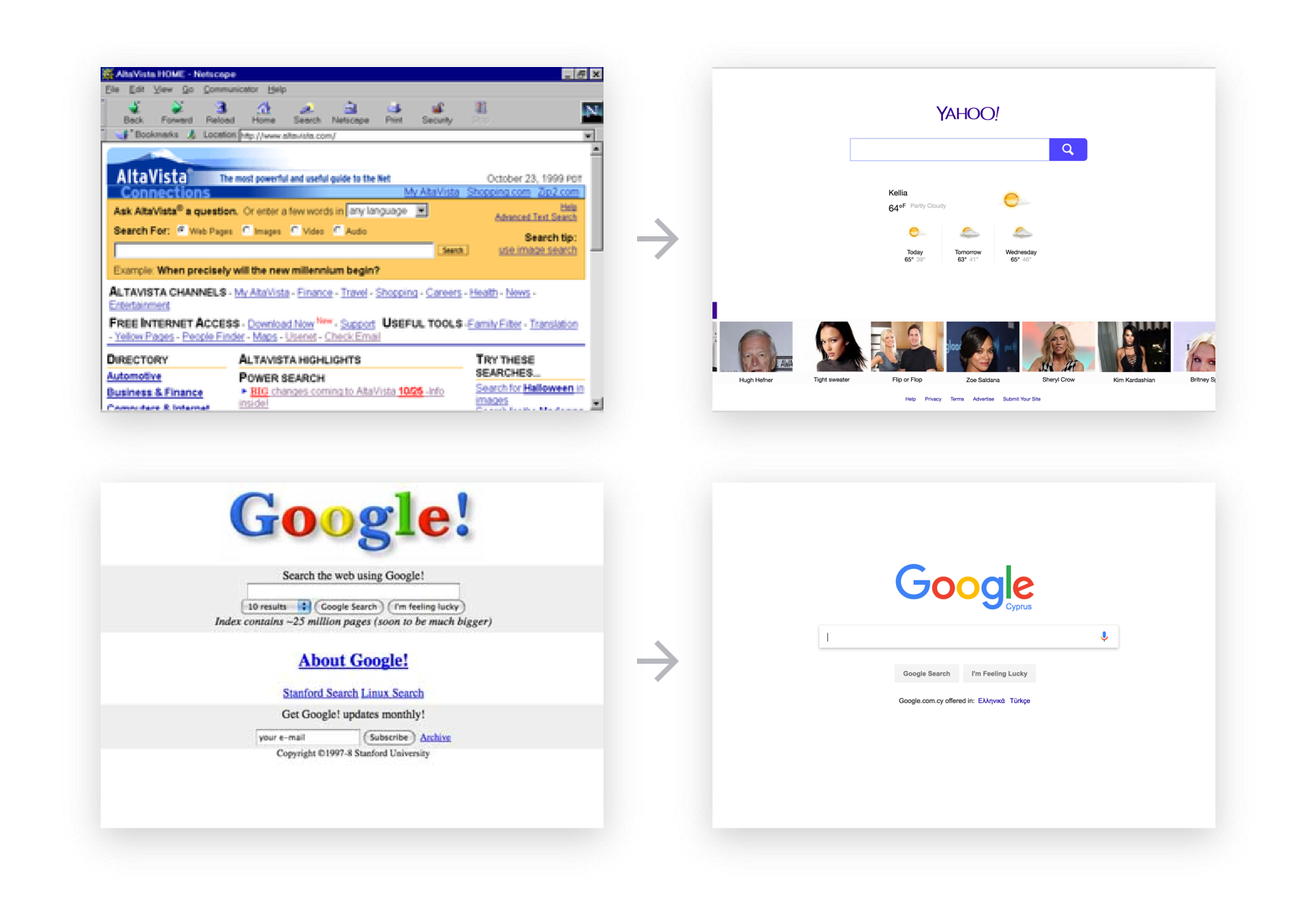
Avoiding users being faced with a poor first experience in an app can be achieved by a great onboarding procedure. It is vital that you do your best to put a new user in the context of the app or product straight away. At any case, the onboarding experience should flow with ease and focus on the available app features; that will ensure that users know how to use the app and recognize its potential.
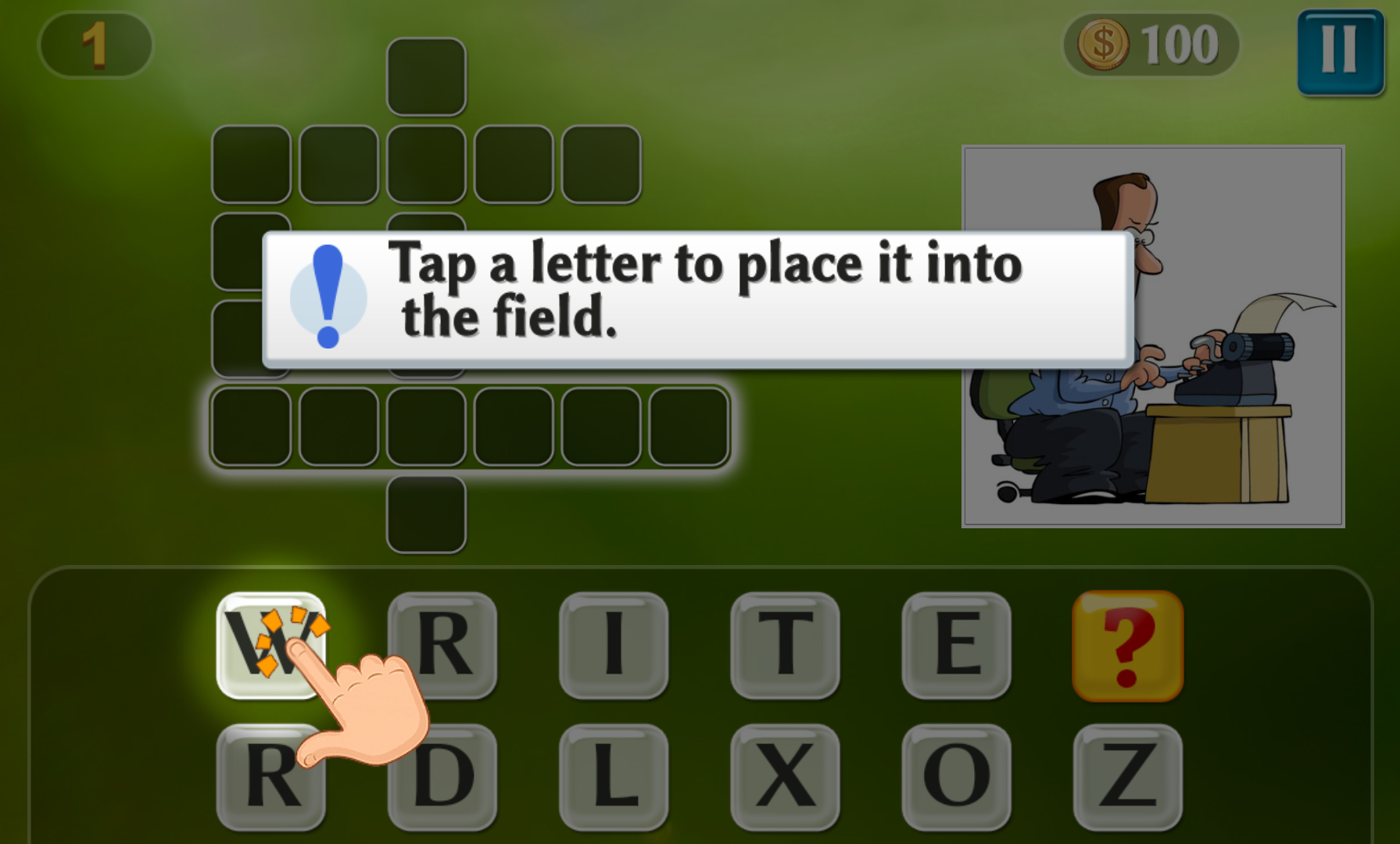
Most publishers usually overlook this step but bear in mind that users(even subconsciously) get a sense of accomplishment by successfully completing an onboarding experience.
Progress and development
It is widely accepted that every person seeks ways to advance and progress in both their personal and professional lives. This provides self-satisfaction and motivates people to continue and persevere. The ability to set goals and achieve them, converting them to small wins is really important in that process. A small win or the accomplishment of a goal makes the user feel better and keeps him engaged, eager to face the next goal along the way.
In a gaming environment, this feeling can be recreated with numerous game levels, weapons, new features etc. The challenge is applying this concept in apps, in general. Gamification techniques, when implemented right in apps can define their success! A great example is the Duolingo app. It allows you to set your own personal goal while attempting to learn a new language. Moreover, the user is given “rewards” on every successful hit in the daily assignments in the app as well as being able to track his/her progress easily during the daily tasks assigned!
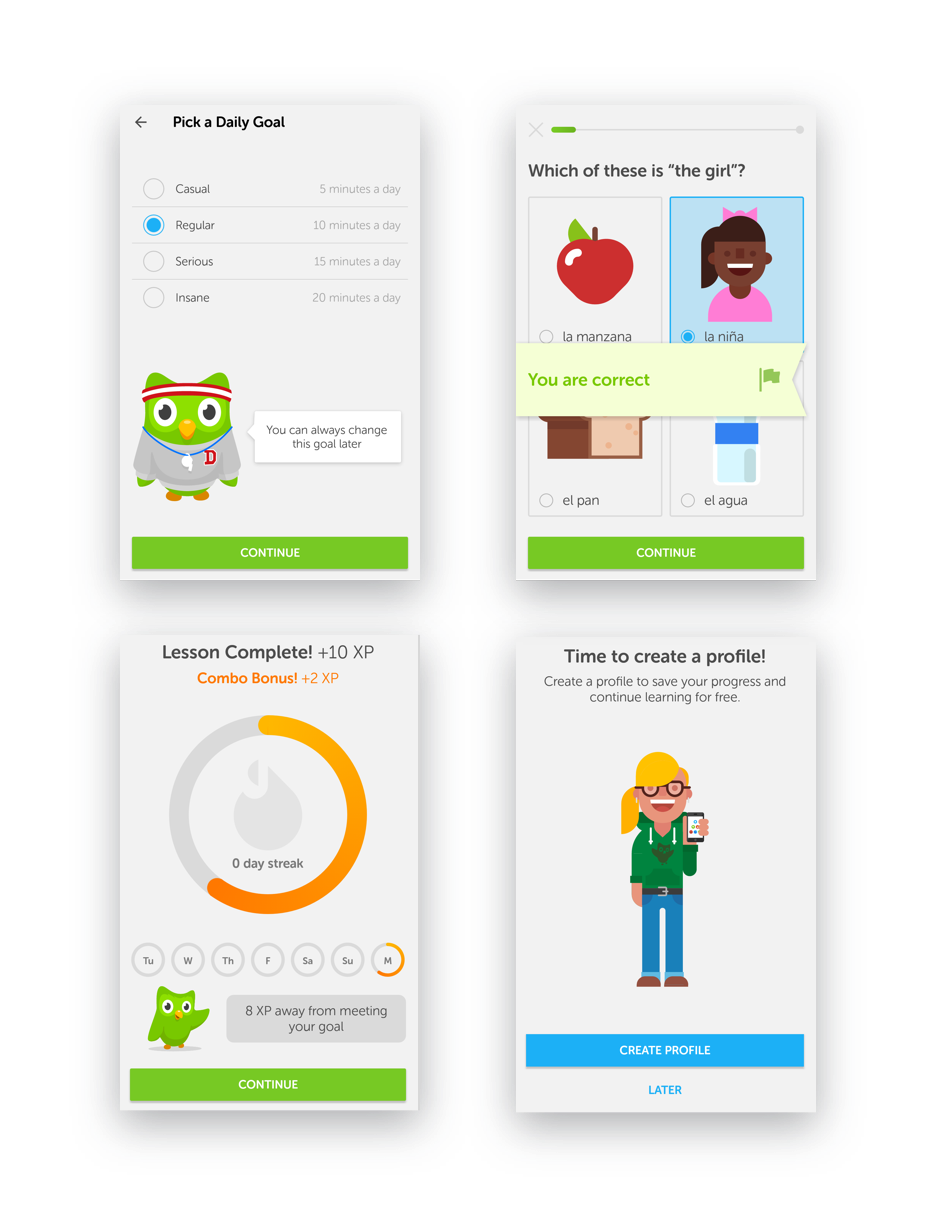
Progress can create engagement. Engagement creates habits. And habits (when used right in product design) can be quite beneficial for app owners.
As discussed previously, you should allow users to sample the potential of the app early on, but also allow them to start making progress from their first interactions with the app. The Duolingo app gets users started in learning the language as soon as they get to using it; they are only asked to create a profile and save their progress after they complete their first lesion successfully. An experienced app user is easily converted to a registered user.
At Pollfish we are an online survey platform and our main goal is to get people to participate in our surveys, right to the end. Completion rates are really important for our metrics and we had to work a lot with our user interface to make that possible. One of the things that has been found to affect completions in a positive way is the progress bar that can be found on the top of every survey. We have experimented both with the positioning but also the visibility of the progress bar and came to the conclusion that removing the progress bar (so in essence a user never knows how far along the survey he is) results in the user abandoning the survey after answering a few questions, since there is no feeling of progression. Another observation was that starting the numbering at 1 (as seen in the screenshot) instead of 0 increased the overall completion rates, as users get a feeling of making progress early on.
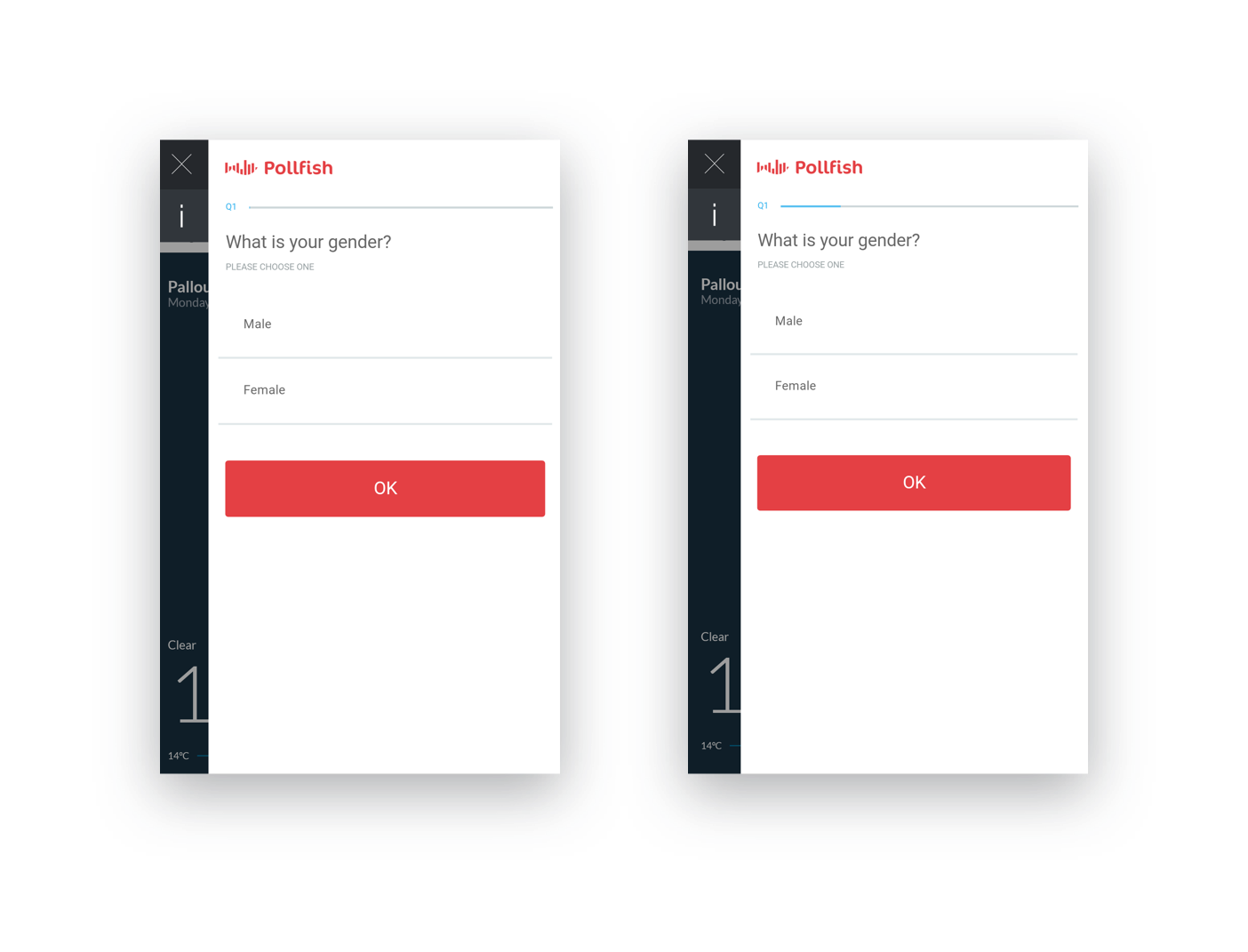
Another great example is Pollfish landing page once the survey creator has signed in; this is where people go to start and create their surveys by using our Pollfish DIY survey tool. Moving users right to the “Create a Survey” step and asking them to name their survey (progress fast) instead of having them navigate through a busy landing page with survey examples, increased conversions greatly. Just because users were given a clear way to be able to get started and move on in the survey creation progress.

A Rising Star
Helping users progress and develop through an app is quite important. Making them feel special and create in them artificial needs, is also a great approach. Following the widely used approach in games with badges, leaderboards or even status points, people get motivated, set new goals and feel proud of their progress.
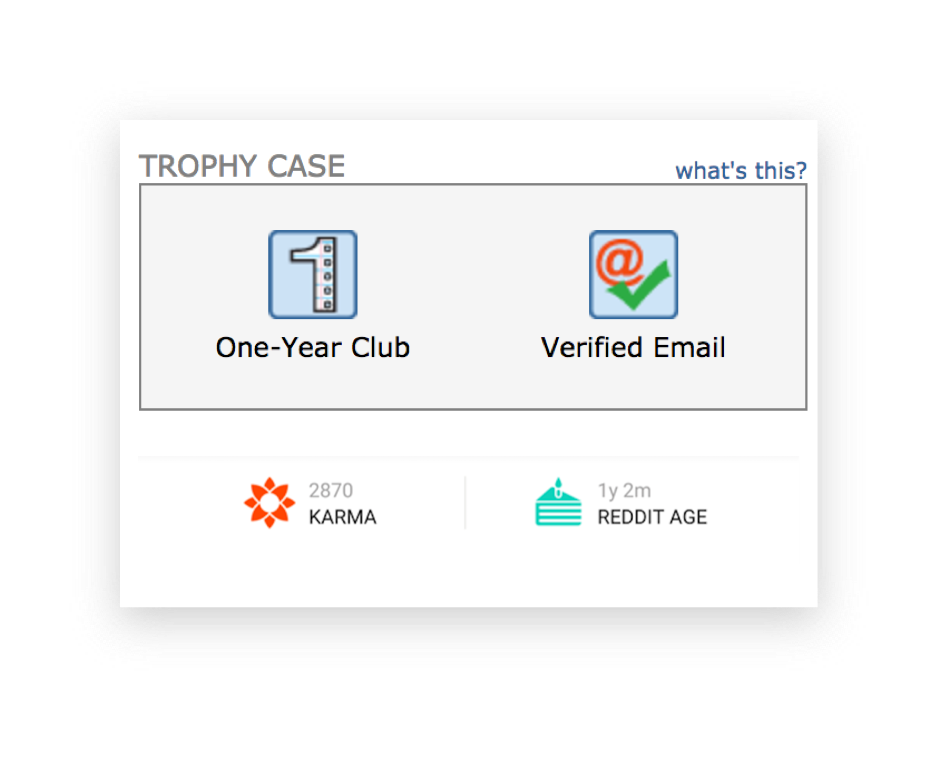
A great example of that is Reddit. Reddit has its own Trophy Case with awards related to user achievements, varying from contribution to usage. However, one of the main currencies of reddit is Karma points. Karma points reflect the reputation of a user based on his contributions, as credited by other users. Having a high karma earns respect in the community but also engages the creditor to the app.
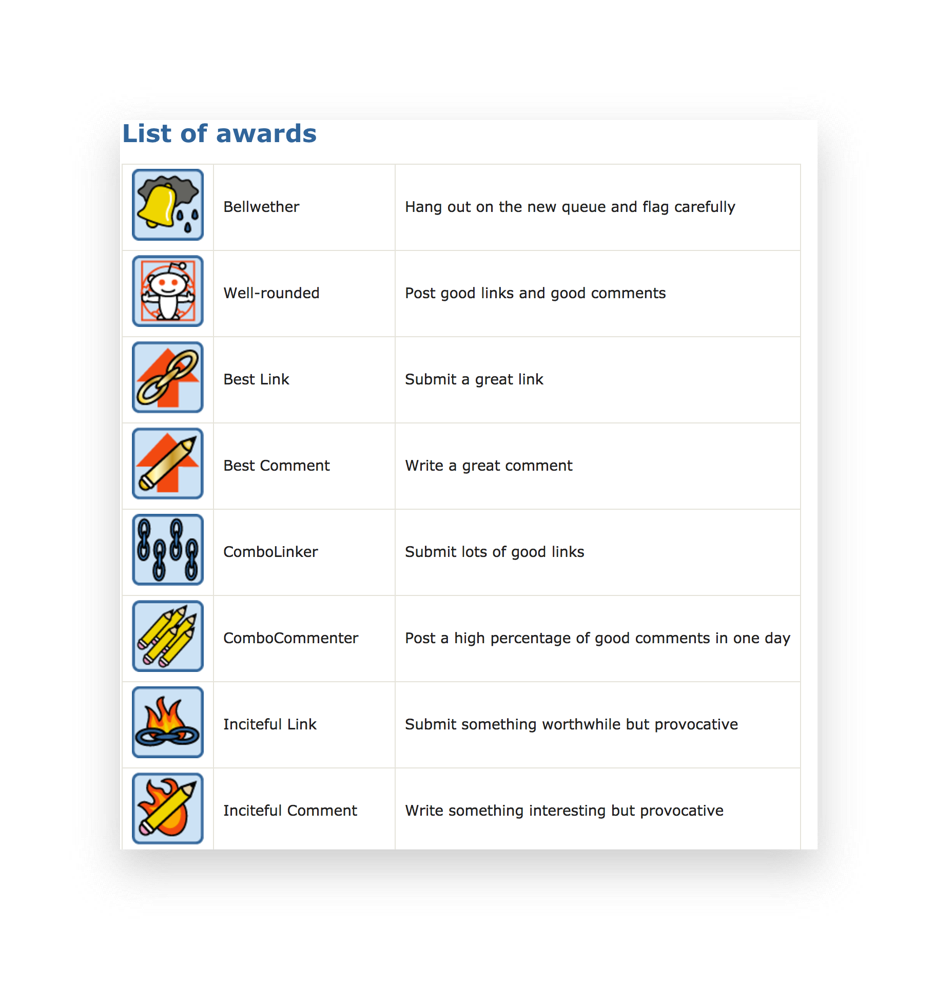
And what about badges? The very well known website StackOverflow is taking gamification to a whole new level. Users can get badges for every contribution to the platform and get more privileges.
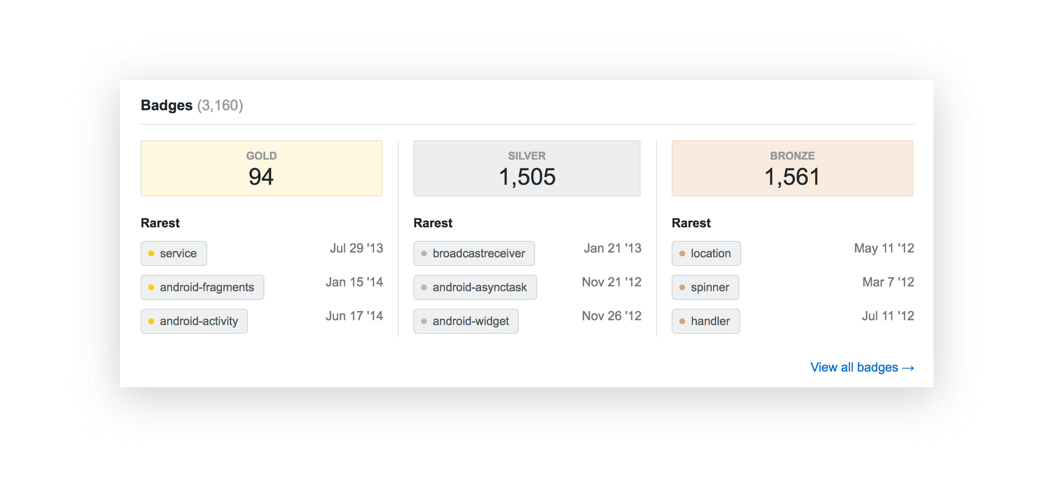
Stackoverflow does not only master gamification techniques but its whole ecosystem is built around them. As you can see below, badges can be based on questions you made, answers provided or participation in comments.
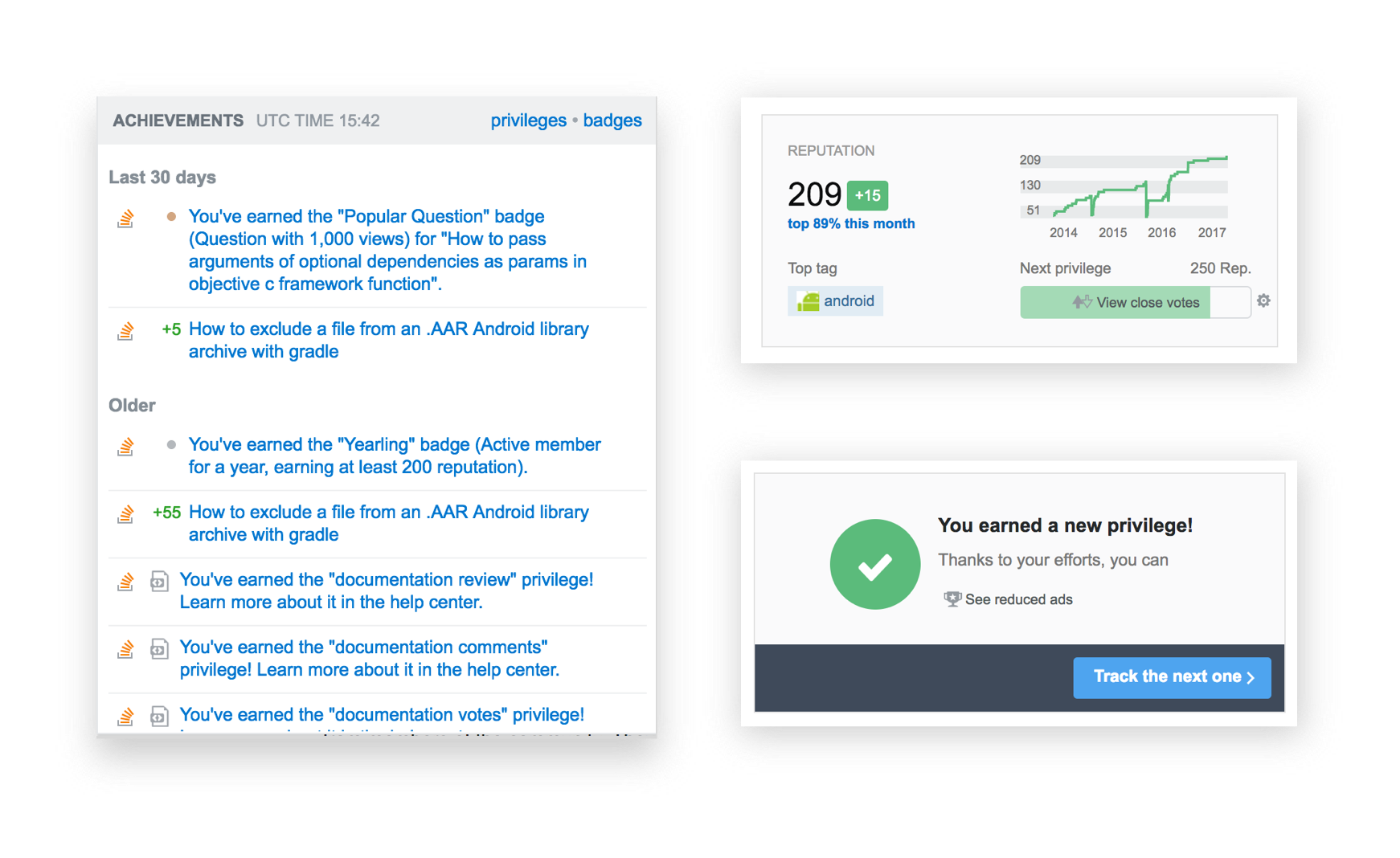
This also introduces a sort of leaderboard, where you can also see what other people are making. In games this is quite common, but as you can see it can be easily applied to any platform (if designed properly). In Stackoverflow you can see, for example, how many people have been awarded a certain badge, check the latest news and also get informed about which percentage of the userbase you fall in.
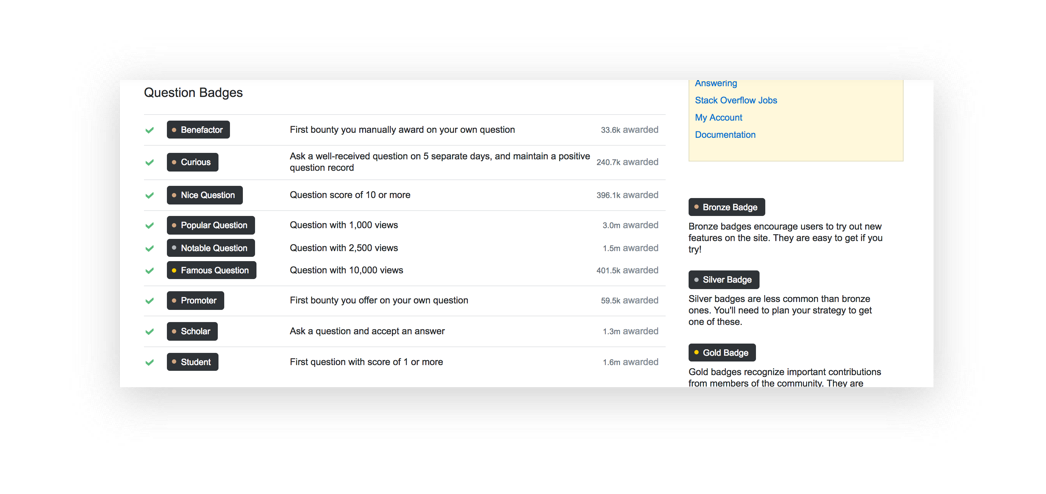
Providing a leaderboard inside an app is a smart move that can increase user engagement and allow users to add goals of their own. Below we can see an example of the Wishbone app where people can check and follow top participants. A common practise is to also register users through social networks like Facebook and thus, access their friends. A user may not get motivated to reach out to another user but what about a close friend? A great example is this screenshot from Two Dots app where you can see the progress of your friend in the level map.
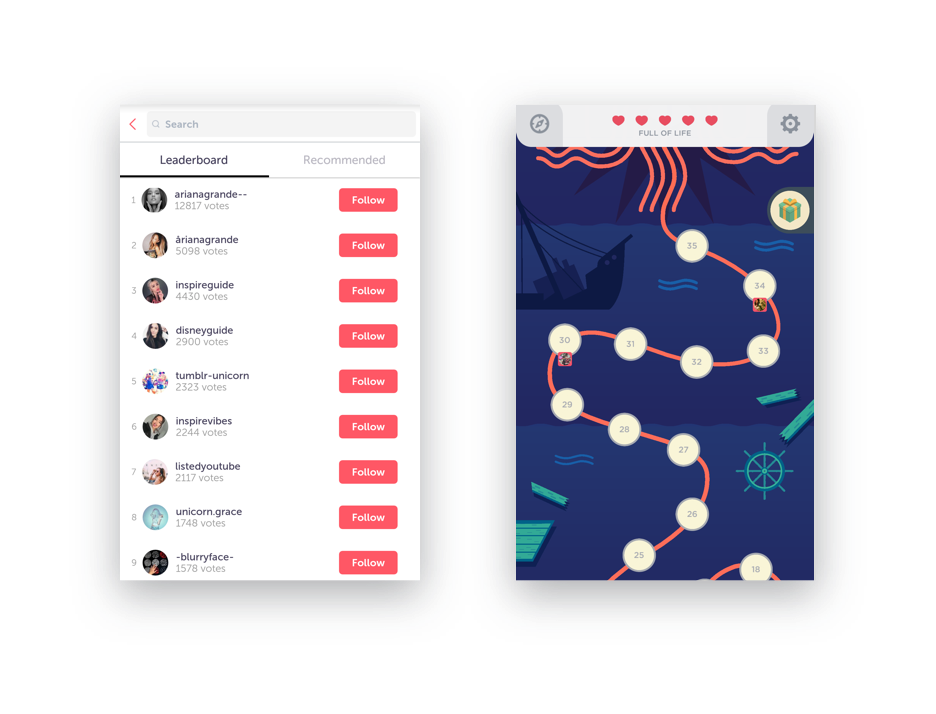
All these mechanisms not only keep users coming back again and again, but also make them feel good about themselves and in turn, special. Introducing social mechanisms is really important and we will explore this in a follow-up article, but for now we will focus on the sense of feeling accomplished and valuable to the app community. Giving a frequent contributor the option to be acknowledged by the community can also drive engagement. You initially make people feel important but also drive them to reach out to each other. And what about Instagram or Twitter followers? How many people are trying to contribute more and more just to increase their followers and thus, feel more appreciated or be considered as experts? What about Quora, and the ability of people to find experts in the industry and ask them questions directly?
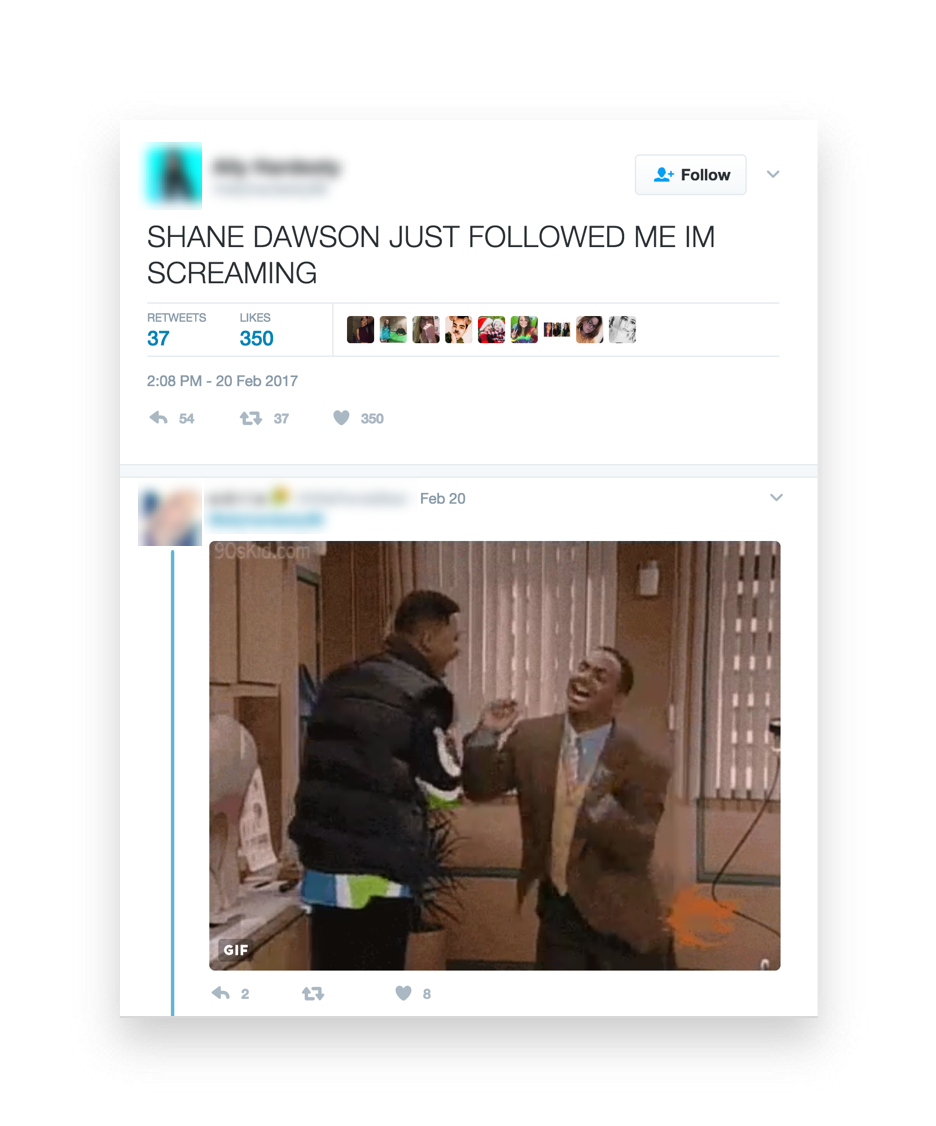
Easy-to-use interfaces with a user-focused design, along with onboarding tutorials when necessary, can introduce users to the context of an app and make them feel fully capable of moving along within the app. Allowing easy progress early on, coupled with the feeling of small wins can also make users happy, since they get a feel of what progress in the app is like. Finally, introducing game-focused elements like badges, a leaderboard and status points in a generic app when possible, can motivate user engagement, as well as make them feel proud and involved in the platform. User feelings are quite important for in app engagement and retention at the end of the day. Being able to capitalise on these feelings and give a sense of accomplishment, self development and progress within apps can be crucial and “make or break” your app.
Do you want to distribute your survey? Pollfish offers you access to millions of targeted consumers to get survey responses from $1 per complete. Launch your survey today.
Global GSK Shingles Survey Insights
Original Insights,The Pollfish Blog
February 24, 2024
Shingles misconceptions: new global survey commissioned and funded by GSK highlights widespread…
B2B Sales Emails: Are they Effective or a Nuisance?
Original Insights,The Pollfish Blog
September 6, 2022
Are B2B sales emails a thorn in your side? Do they drive you crazy? Virtually all white-collar…
